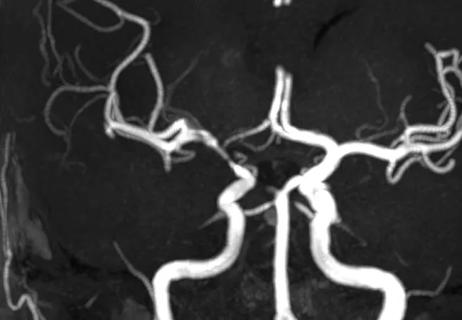Retrospective study examines outcomes associated with common treatment pathways

Findings from a Cleveland Clinic-led study add new insights to the literature of arrhythmia burden associated with congenitally corrected transposition of the great arteries (cc-TGA) treatment outcomes. While more long-term research is needed to tease out comparative risks, the data may help inform patient counseling and management strategies.
Advertisement
Cleveland Clinic is a non-profit academic medical center. Advertising on our site helps support our mission. We do not endorse non-Cleveland Clinic products or services. Policy
The research team published their findings in Heart Rhythm.
Patients with cc-TGA are at risk for developing both bradyarrhythmias and tachyarrhythmias, but it's unclear if arrhythmia burden is more closely associated with one treatment strategy, according to experts. First author Iqbal El Assaad, MD, notes that longer-term outcomes related to ventricular and atrioventricular (AV) valve function have been well-documented, but arrhythmias are less so.
"From an electrophysiologist's perspective, heart rhythm issues pose a significant morbidity for patients with cc-TGA," she explains, highlighting the importance of the investigation. "The question regarding the surgical intervention for patients with cc-TGA comes up every time we encounter a new patient with this diagnosis, because every approach has its own unique set of long-term complications and issues."
Anatomic repair has edged out physiologic repair for cc-TGA in most centers. The latter has been the conventional approach to repair by addressing the surgical defects and leaving the morphologic right ventricle to function as the systemic ventricle. However, many patients, the data show, will go on to develop heart failure, ventricular dysfunction and AV valve regurgitation in their 40s and 50s.
Anatomic repair includes an atrial switch operation, wherein the left ventricle becomes the systemic ventricle, maintaining its morphological purpose. "The thinking behind this," explains Dr. El Assaad, "is that longer-term outcomes can be improved from a functional and AV valve standpoint."
Advertisement
One previous study compared these two surgical approaches to evaluate arrhythmia burden, but until now, none have also included a third group, a nonsurgical treatment cohort.
Important questions have been raised about the best practices for managing this group. "Some patients are born with cc-TGA but don't have intracardiac defects, and the question comes up: Do we proceed with the full repair?"
Cleveland Clinic researchers analyzed data from patients treated within the healthcare system between 1995 and 2021, resulting in 170 patients with a median follow-up of 11.8 years. Every patient in the study had at least one electrocardiogram or ambulatory monitoring before intervention and at the follow-up time. The demographic results included the following:
The overall risk of bradyarrhythmia, defined as complete heart block or the need for pacemaker implantation, occurred in 49 (29%) of the patients, with a higher proportion of these patients undergoing physiologic repair group compared with the anatomic repair and nonsurgical groups, respectively (50% vs. 22% vs. 19%; P = .001).
However, Dr. El Assaad cautions that the groups are very different in terms of age at intervention, follow-up times, and the age at which the arrhythmia occurred.
Additionally, the risk of heart block may be potentially related to changes in the AV, nodal, and conduction system over time, she adds. "We do know that another unique feature about these cc-TGA patients is that they have an inherent risk of developing complete heart block—even without any intervention."
Advertisement
Better postoperative outcomes, like freedom from complete heart block or permanent pacemaker implant at five years, were also noted in the anatomic repair cohort.
Overall, 29% of the study population experienced tachyarrhythmia. And though prevalence was similar across groups, the anatomic group is considerably younger, meaning they experienced more tachyarrhythmia in their first two decades of life.
"Having said that, about 80% of these arrhythmias tended to be transient and resolved at the time of follow-up, so they weren't long-term recalcitrant arrhythmias that required multiple interventions," notes Dr. El Assaad.
Still, time will tell how the anatomic repair cohort evolves regarding arrhythmia burden as they reach adulthood.
The findings reinforce that, regardless of the treatment group, there is an inherent risk of tachyarrhythmia and bradyarrhythmia, which Dr. El Assaad notes "adds to the complexity of the decision for each patient."
There has been a clinical shift toward operating on young patients with cc-TGA, and studies like this help suss out the risk-benefit calculation as these patients age, especially when it comes to arrhythmias. Right now, there are more questions than answers.
Senior author Akash Patel, MD, adds, "We are seeing similar rates of abnormalities in rhythm at quite young ages. From that standpoint, we must ask these questions: What is the right strategy? What is the right long-term approach to care for these patients?"
He adds that Cleveland Clinic is uniquely positioned to investigate these questions and care for patients as the institution manages complex congenital heart care across the lifespan, from childhood through adulthood.
Advertisement
"We are thinking about the patient's entire journey with this diagnosis and which surgical interventions might be the right choice for them, not just focusing on the right surgery for heart function, valve or rhythm, but thinking about all three of those things in the short and long term," concludes Dr. Patel.
Advertisement
Advertisement

Combining quantitative vessel wall MRI metrics, CSF abnormalities and neurologic symptoms can be highly predictive

Experts advise thorough assessment of right ventricle and reinforcement of tricuspid valve

Reproducible technique uses native recipient tissue, avoiding risks of complex baffles

HALT has unique clinical implications for adults with congenital heart disease

A reliable and reproducible alternative to conventional reimplantation and coronary unroofing

Experts raise concerns, make recommendations about improving the data

Survival is improving, but the youngest patients still face disproportionate risk

Program will support family-centered congenital heart disease care and staff educational opportunities